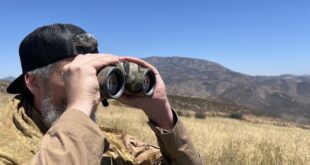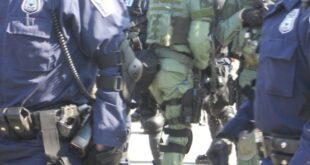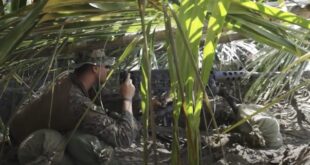by Susan Katz Keating
Anna Chapman was a successful realtor who in 2009 mingled with ease among New York society. She was intelligent, beautiful, and lively – and perhaps overly confident. She apparently did not know that the Feds were on to her, and that she was being investigated for who she really was: Anna Vasilyevna Kushchenko, Russian spy.
Chapman was caught. So, too, were others in her cohort of “Illegals,” Russian agents undercover inside the United States. Now, counterintelligence insiders tell Soldier of Fortune, the story might not be over.
“Don’t assume it stopped when Chapman and the others were arrested,” a former counterintelligence agent said. “Others may have gone undetected, and might still be here.” The agent continues to work in security, and spoke on condition of anonymity.
The agent claimed to have no direct knowledge of existing investigations, but noted that the community of CI experts frequently have shared similar suspicions among themselves.
“The Russians are voracious, and they know how to feed themselves,” the former agent said. “They know how to do it and do it well right under your nose. They are very good at not looking like spies.”
A former British intelligence chief agreed.
“The fact that they’re nondescript or don’t look serious is part of the charm of the business,” said Sir Stephen Lander, who previously served as Director-General of the UK’s MI5 domestic counterintelligence agency. “That’s why the Russians are so successful at some of this stuff. They’re able to put people in those positions over time to build up their cover to be useful.” Lander made his remarks shortly after the known cadre was arrested. “They are part of a machine. … And the machine is a very professional and serious one.”
The method of using “Illegals” thrived when the Soviet Union was intact. The undercover program was tightly organized and well funded. It featured some highly gifted operators.
British espionage writer Nigel West once told me about a virtuoso Soviet spy who spoke some 20 languages. The spy, Dmitri Aleksandrovich Bystrolyotov, is considered to be one of the stars of the long-ago “Great Illegals.”
When the Soviet Union broke apart, the Russian Federation later carried the undercover program forward.
“That’s how we wound up with the group that included Anna Chapman,” the CI agent said.
The group was skilled. But they nonetheless drew scrutiny from another highly skilled group: the FBI.
While the Russians spied on America, the Feds spied on the “Illegals.” Over the course of “Operation Ghost Stories,” the Feds kept watch while the spies assimilated into American society. The spies held cover jobs, bought homes, and raised families, all while reporting to their true masters in Russia’s Foreign Intelligence Service, the SVR.
“The SVR was in it for the long haul,” according to the FBI. “The illegals were content to wait decades to obtain their objective, which was to develop sources of information in U.S. policymaking circles.”
The case against Chapman involved old fashioned gumshoe work, with a modern twist.
“We were able to capture wirelessly the communications between her and her handler,” then-FBI Counter Intelligence Assistant Director Frank Figliuzzi told ABC News in a 2011 interview. Chapman sent her transmissions from at least six locations, Figliuzzi said while describing the process. “She transmits and receives messages from the official who is in close proximity but not anywhere near visibly close to her … she is transmitting encrypted code that the FBI was able to break.”
After the FBI broke the code, it also cracked the spy ring, and planted an informant. The Feds hacked into Chapman’s computer in order to create technical problems, and then sent the informant to help Chapman fix the issue. It turned out that Chapman had been using her laptop to create a private network to exchange messages with a Russian government official.
The FBI moved in on June 27, 2010, arresting Chapman and nine others from the “Illegals” network. The spies pleaded guilty to conspiring to serve within the U.S. as unlawful agents of the Russian Federation. Instead of going to prison, they went home to Russia as part of a prisoner exchange.
Officially, the story ends there. But that doesn’t mean it’s over, the former CI agent said.
“Foreign intelligence services want what we have, and they send people undercover to get it,” the agent said. “For all we know, the Feds have others under surveillance, and are waiting for the right moment to swoop in.”
For people who know these hypothetical sleepers, any arrests likely would come as a shock when the FBI decides to wrap up a case.
“The family, the neighbors, the coworkers – everyone always is bowled over when the person they thought they knew turns out to have a different name, a different background, and a secret mission,” the agent said.
In the meantime, all appears quiet on the surface.
“That’s the thing about counterespionage,” the agent said. “You never acknowledge it – until you do.”
The FBI has released many files on the Operation Ghost Stories, along with videos depicting Russian agents in action.
Susan Katz Keating is the publisher and editor in chief at Soldier of Fortune.
 Soldier of Fortune Magazine The Journal of Professional Adventurers
Soldier of Fortune Magazine The Journal of Professional Adventurers






